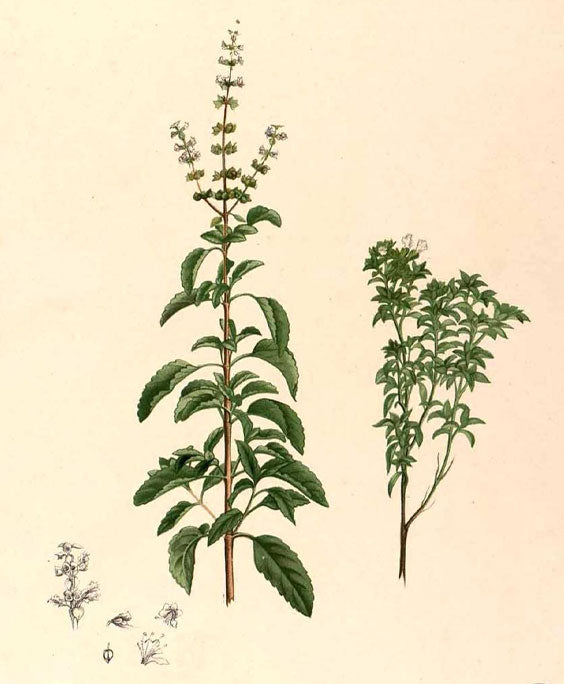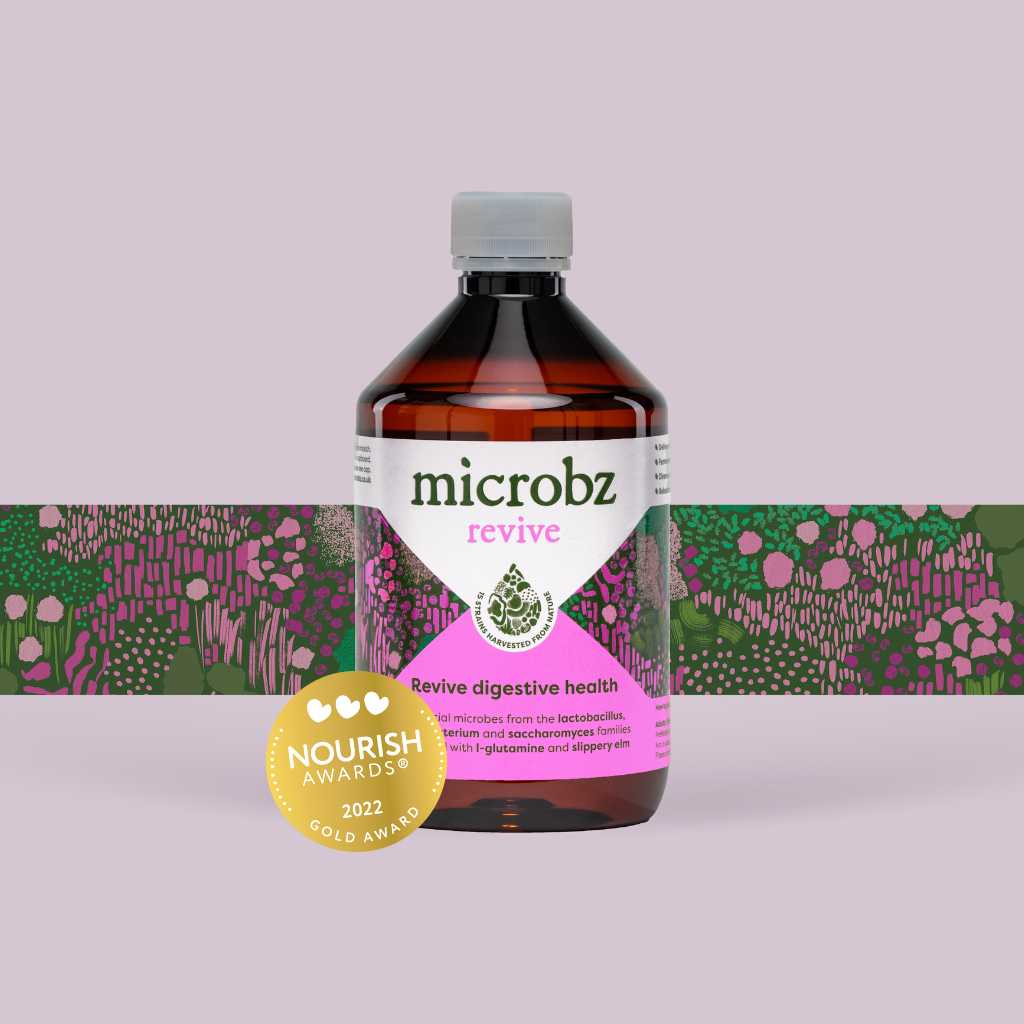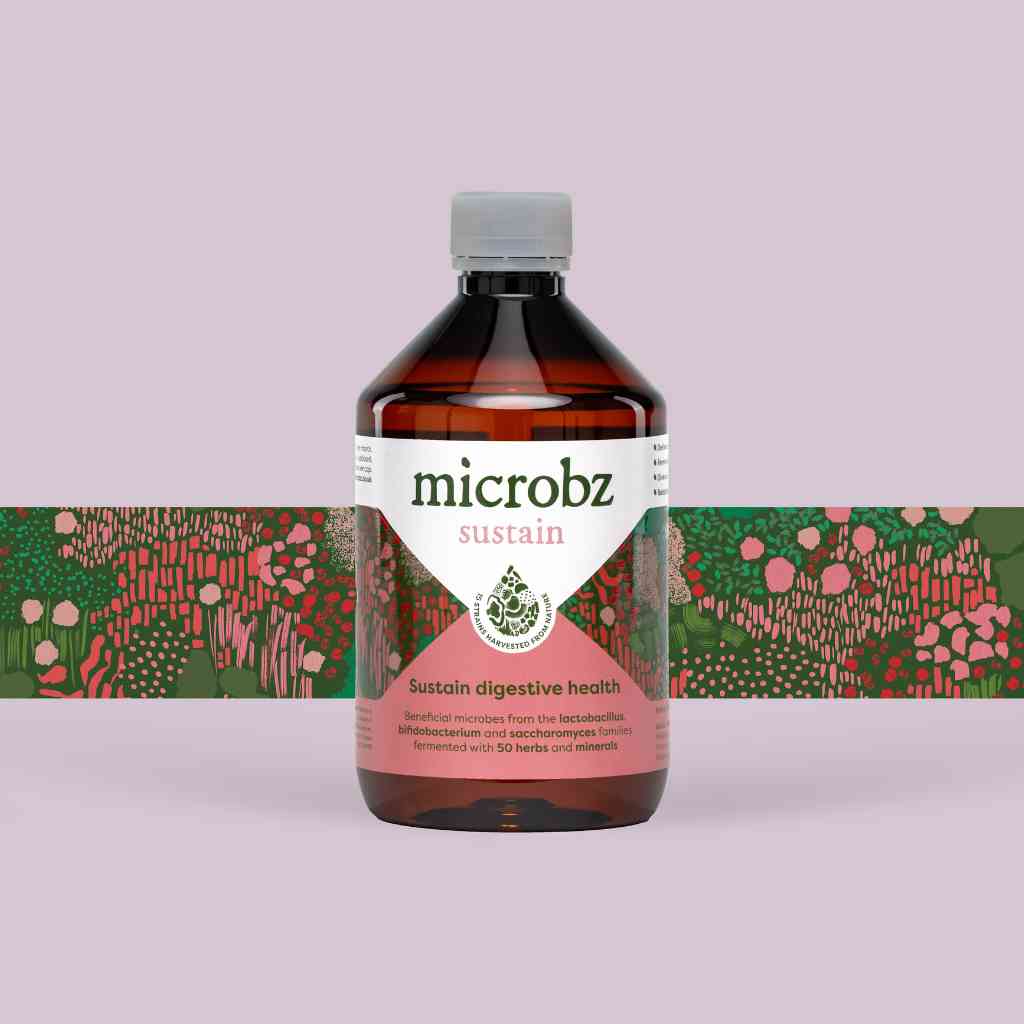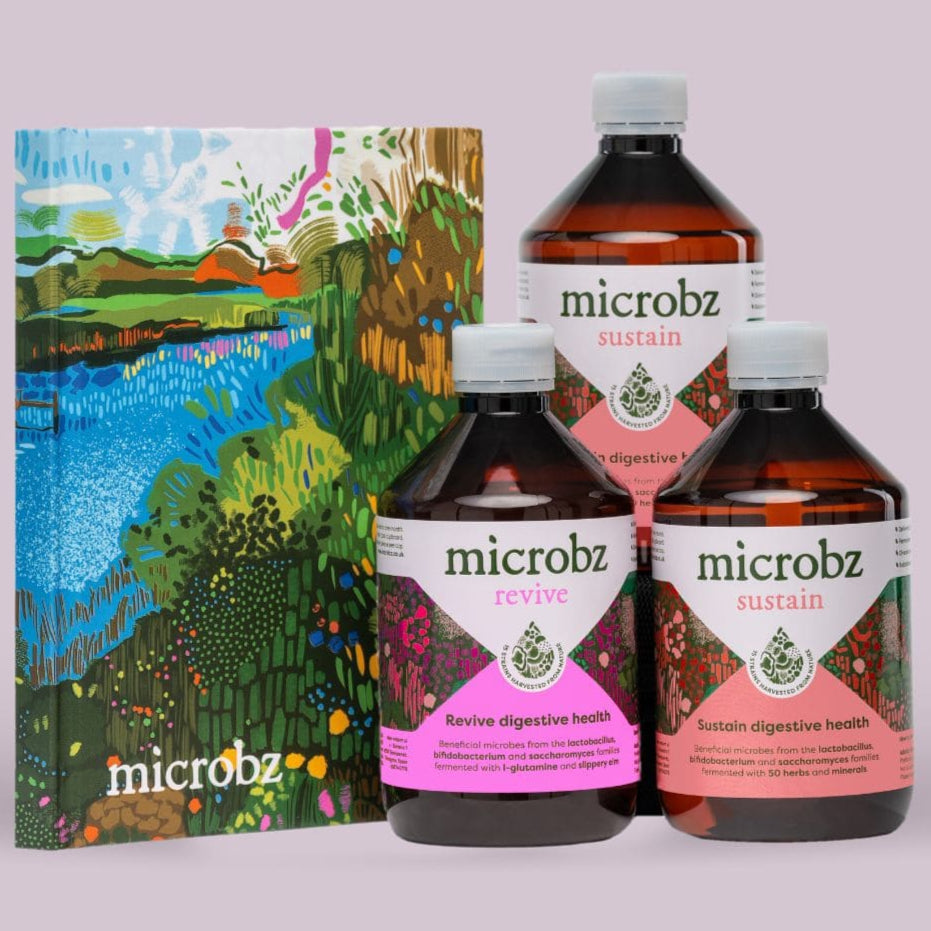Holy basil
Ocimum sanctum

Family: Laminaceae
Which probiotic is it in?: Holy basil is a key herb in Women
Habit and cultivation: Native to the Indian subcontinent, Holy basil now grows in most places in the world. Found in most traditional Hindu homes as a pot plant. Grows well in moist soil, with high rainfall and humid conditions. Grown from seed and harvested when in full bloom to obtain a maximum, high quality essential oil.
Actions (known for): Adapotgen, anti-depressant, anti-bacterial, diaphoretic, antiseptic, relaxant, febrifuge.
History of Holy basil
Parts used from the Holy basil
Leaves.
Constituents (bio available chemicals):
Volatile oils. Saponins. Polysaccharides. Glycosides. Tannins. Alkaloids. Ascorbic acid. Carotene. Eugenol. Methyl eurenol. Linaloool, Apigein, Orietin and Vicenin.
Nutritional constituents:
Vitamins: A and C. Minerals: Calcium, zinc, iron, chlorophyll.
Indications:
Colds, cough, sinus congestion, headaches, arthritis, rheumatism, fevers, digestive bloating.
Dosage:
Traditionally infused into Ghee. Capsule: 300-2,000mg per day for preventative purposes. As a treatment 600-1,800mg taken 3 x daily. You can make tea from the whole plant using 2-3 tsp of herb in hot not boiling water. Tincture: 40-60 drops 2-4 x daily.
British Herbal Pharmacopoeia
Cautions for therapeutic doses
Not to be used by couples trying to conceive, nor to pregnant or nursing mothers. Not to be used when taking warfarin and a caution for insulin dependent diabetics.




